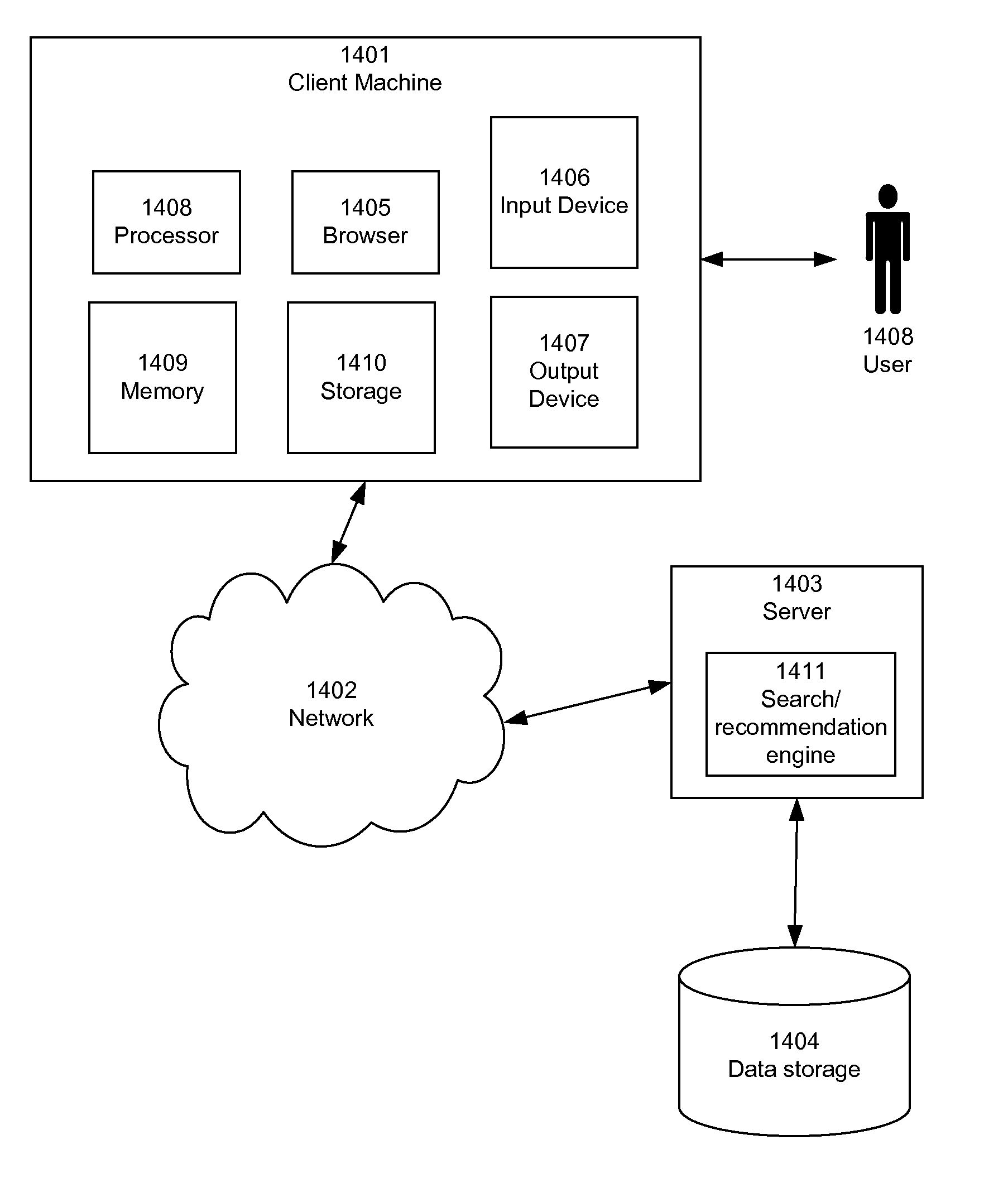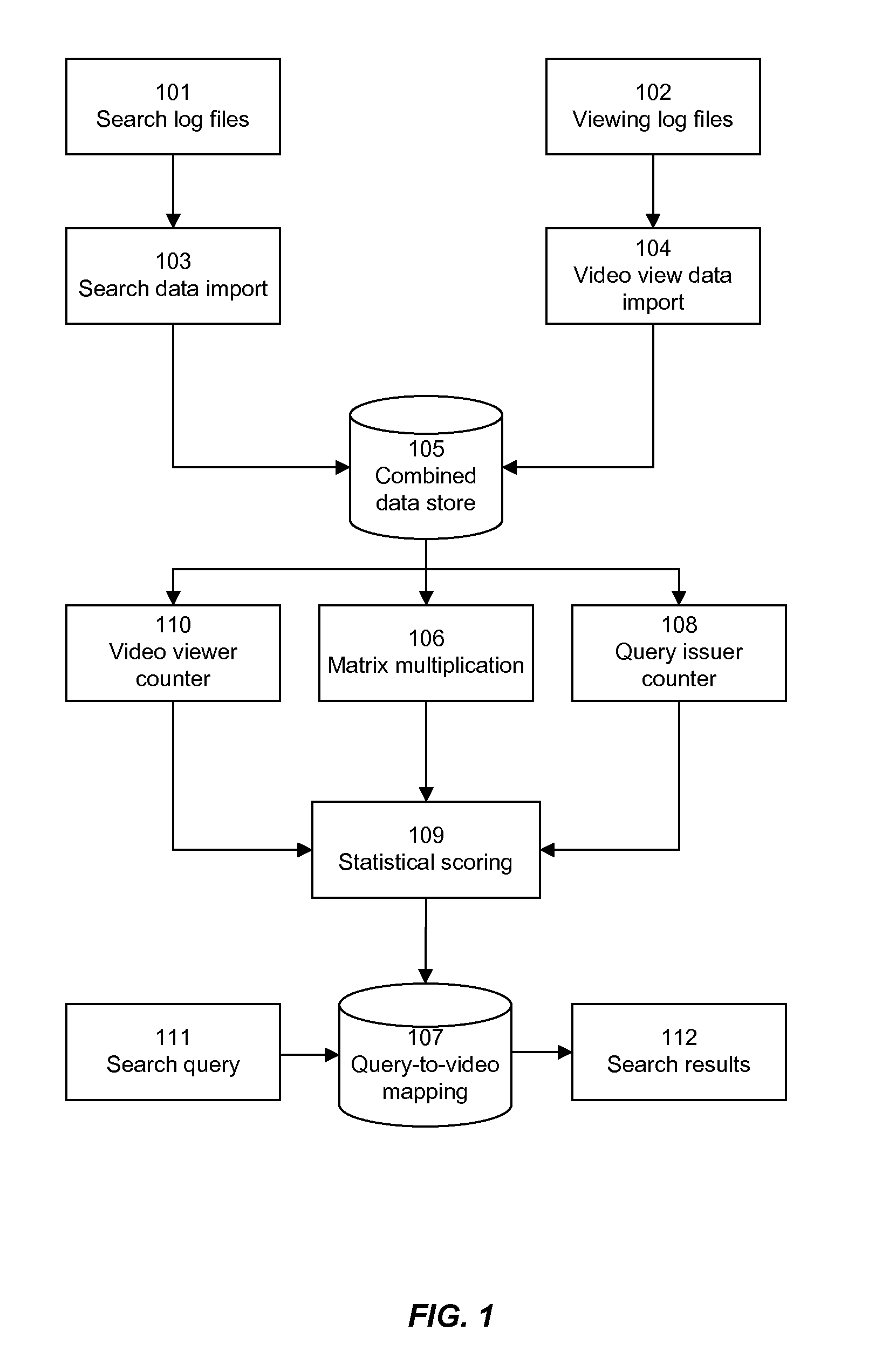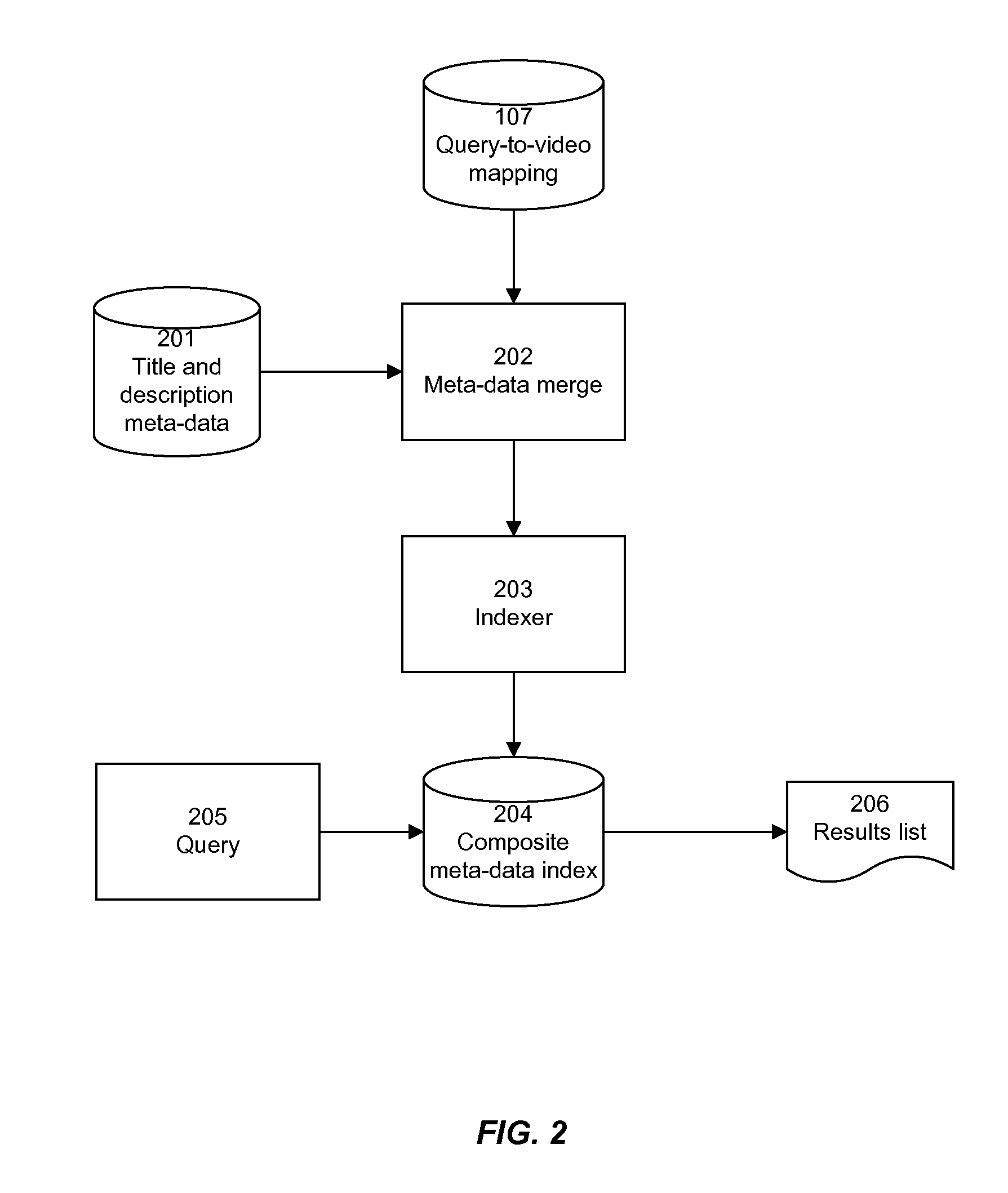Searching Using Patterns of Usage
a search and usage pattern technology, applied in the field of search techniques, can solve the problems of poor availability of meta-data for such multi-media objects (such as title, description and/or tags), and achieve the effect of improving search results and/or recommendations
- Summary
- Abstract
- Description
- Claims
- Application Information
AI Technical Summary
Benefits of technology
Problems solved by technology
Method used
Image
Examples
example
Handling Misspelled Query Terms
[0110]FIGS. 11 through 13 depict examples illustrating the ability of the present invention to handle a misspelled query term. The query “adams family” was submitted, although the user intended to submit “addams family”, referring to the television program. In general, conventional search engine spelling correction techniques may not work to correct this query because the individual terms “adams” and “family” are so common and because the misspelled compound is common as well.
[0111]Referring now to FIG. 11, there are shown results 1101 of conventional text search using the misspelled query “adams family”, as might be generated by a weighted term retrieval engine for searching for video content, according to the prior art. Results 1101 include no items that relate to the intended query.
[0112]Referring now to FIG. 12, there are shown queries 1201 that are related to the “adams family” query according to co-occurrence analysis. The related queries 901 inc...
PUM
 Login to View More
Login to View More Abstract
Description
Claims
Application Information
 Login to View More
Login to View More - R&D
- Intellectual Property
- Life Sciences
- Materials
- Tech Scout
- Unparalleled Data Quality
- Higher Quality Content
- 60% Fewer Hallucinations
Browse by: Latest US Patents, China's latest patents, Technical Efficacy Thesaurus, Application Domain, Technology Topic, Popular Technical Reports.
© 2025 PatSnap. All rights reserved.Legal|Privacy policy|Modern Slavery Act Transparency Statement|Sitemap|About US| Contact US: help@patsnap.com



